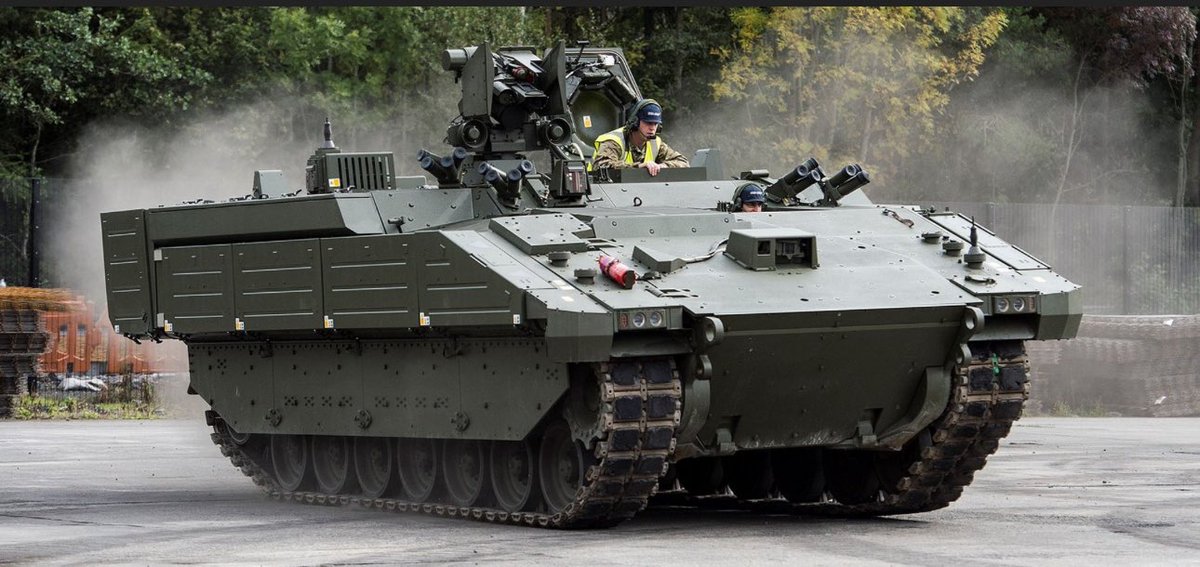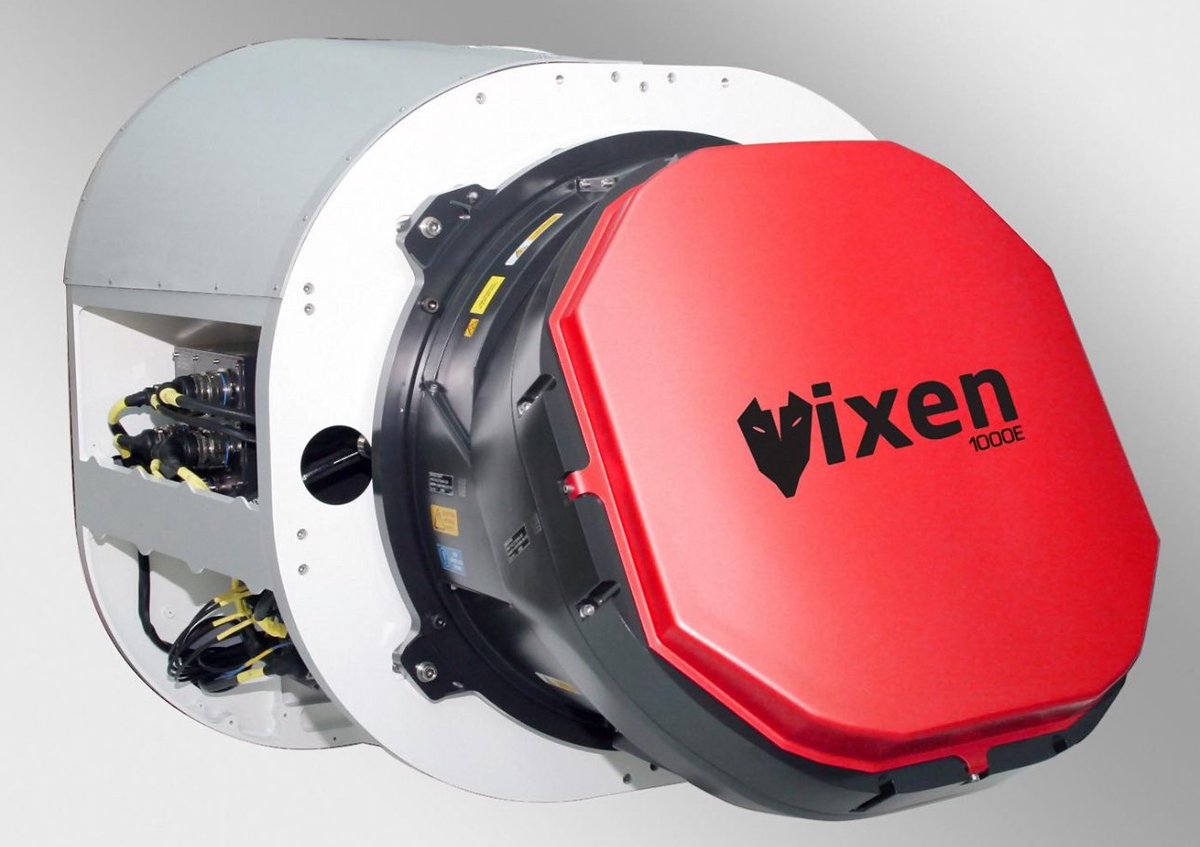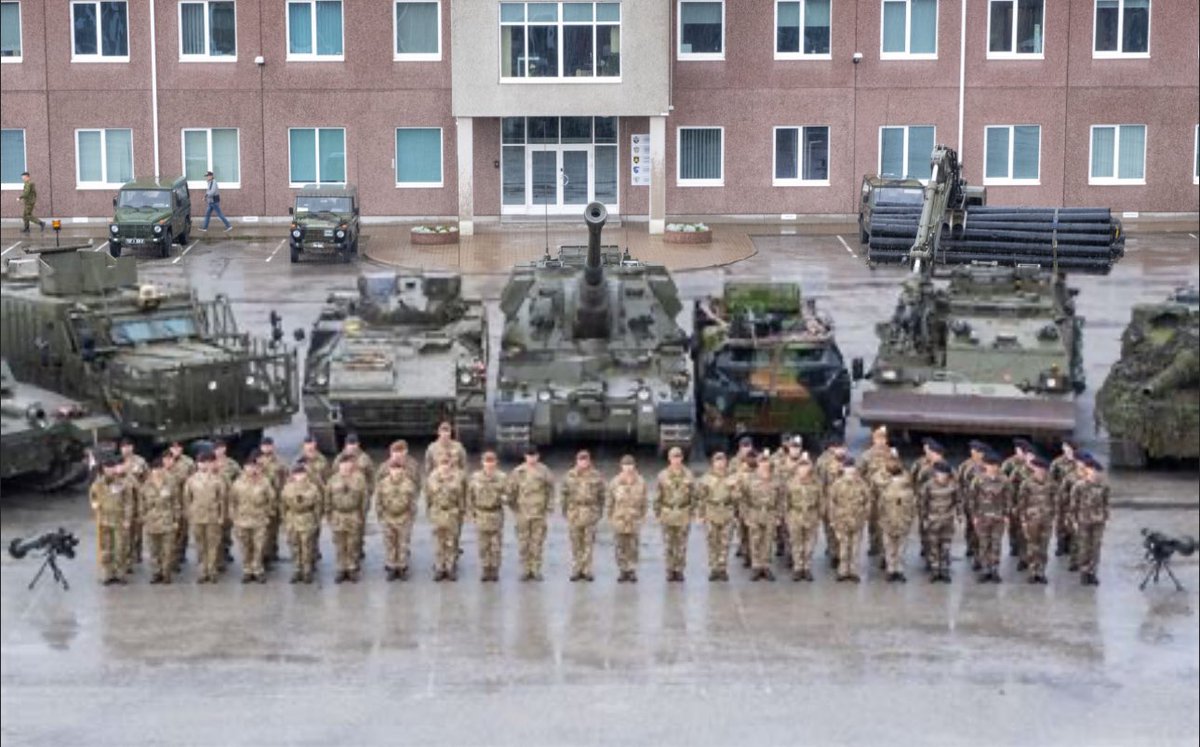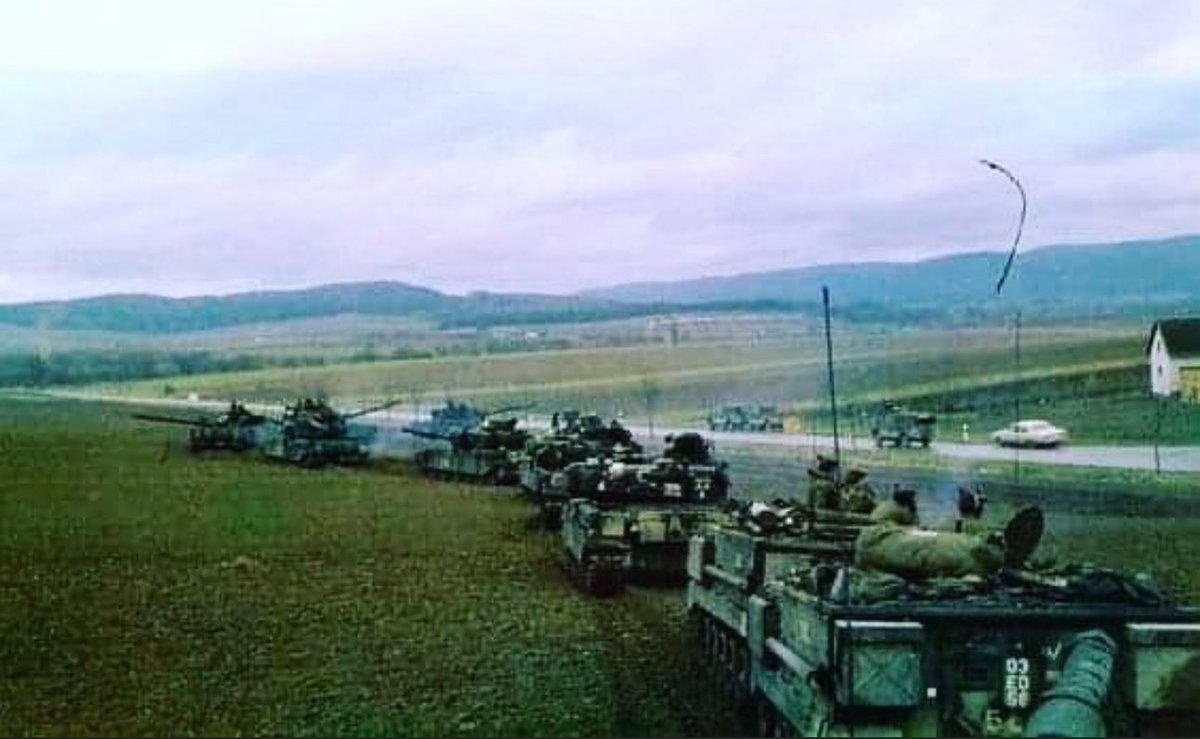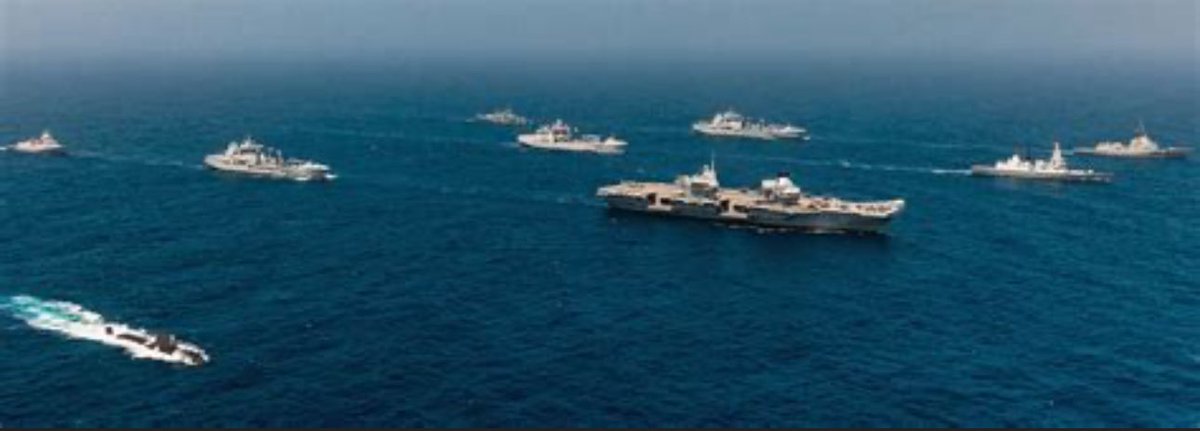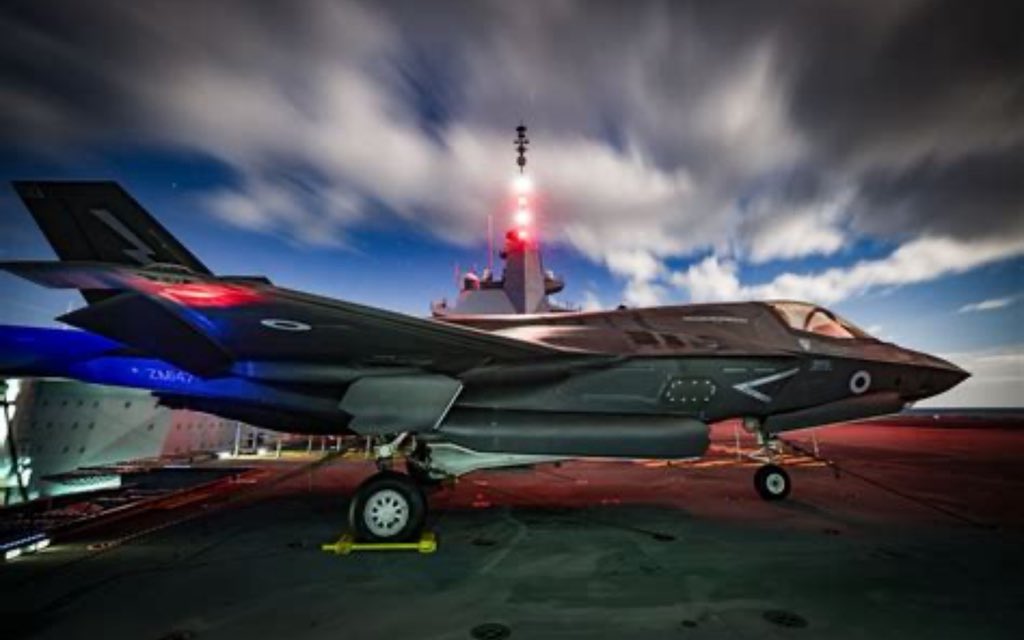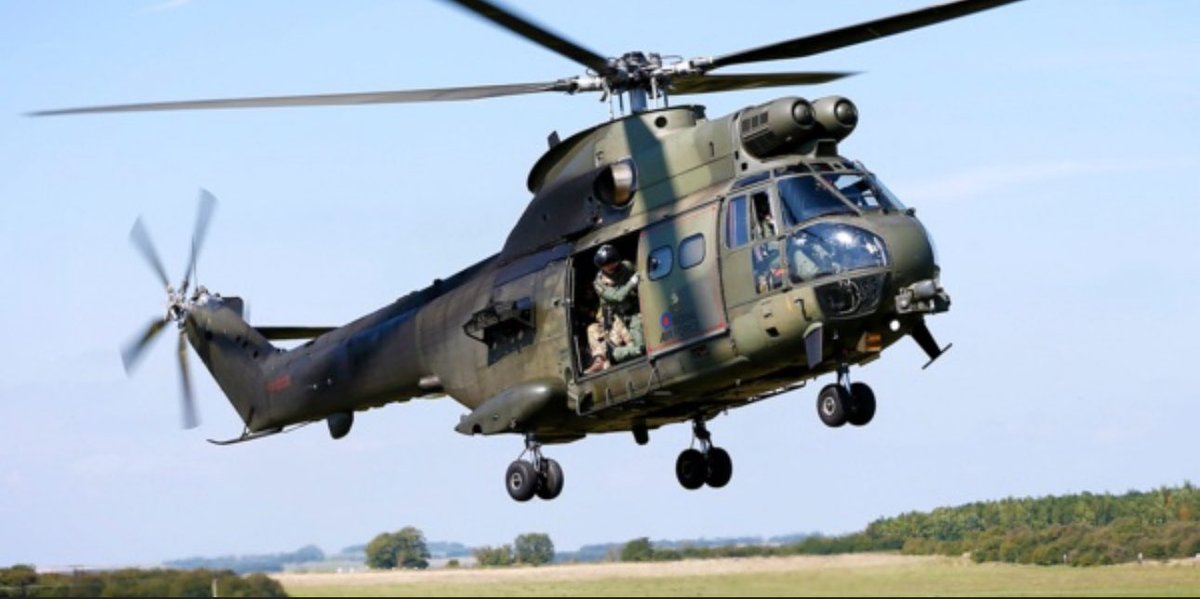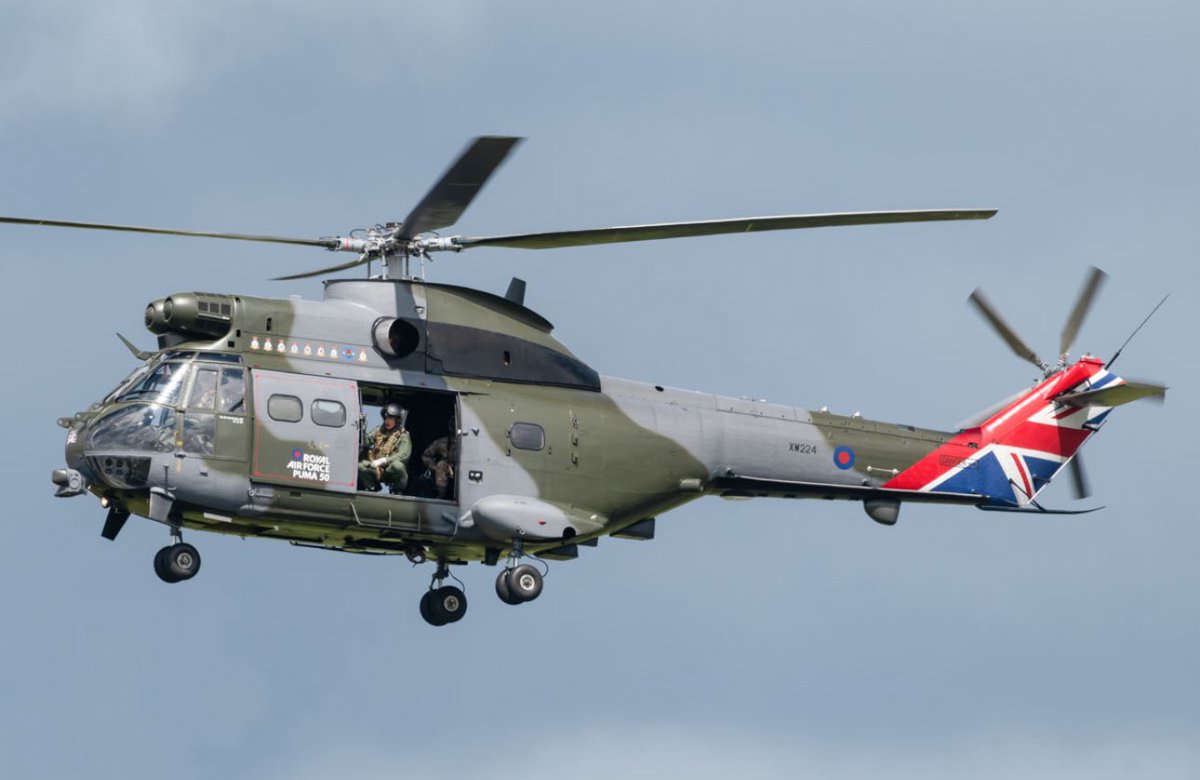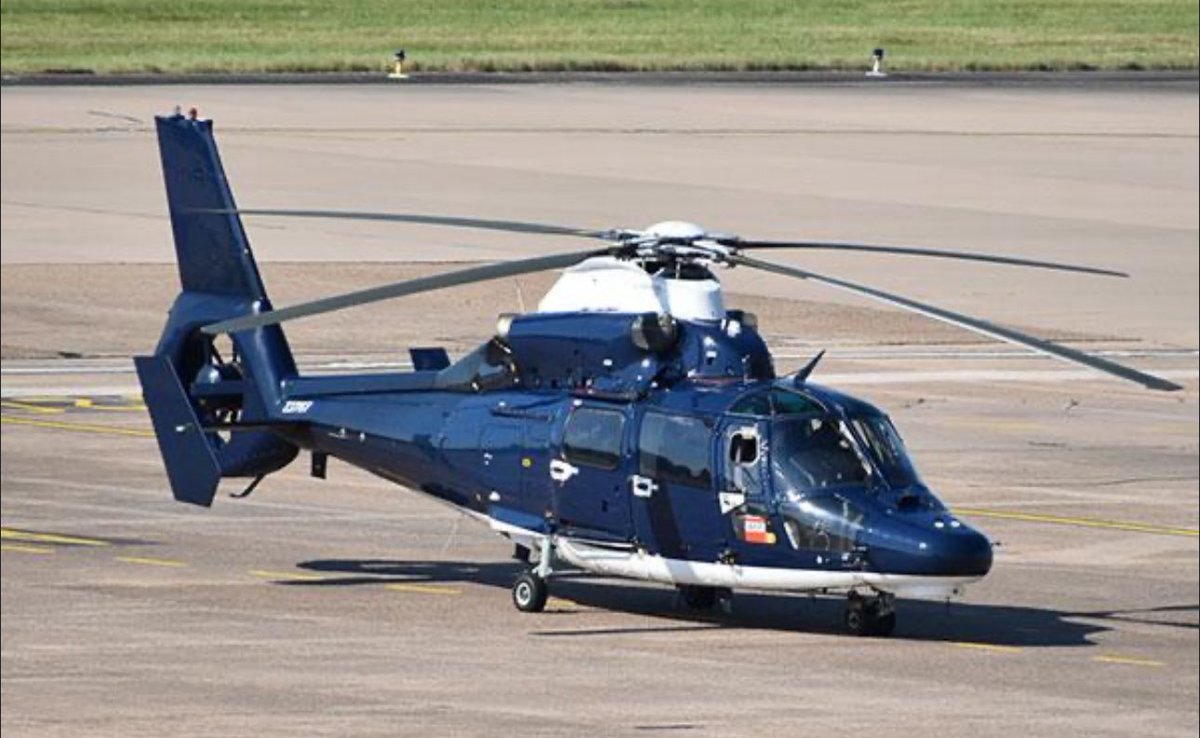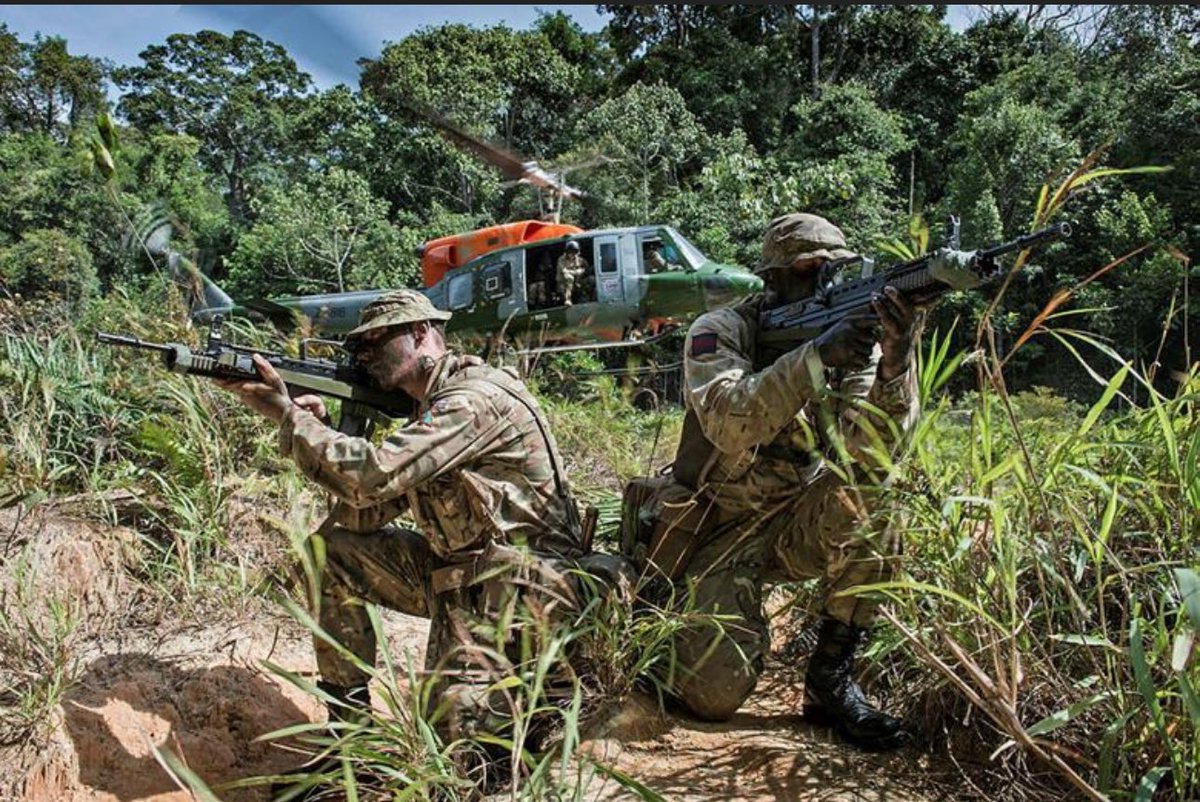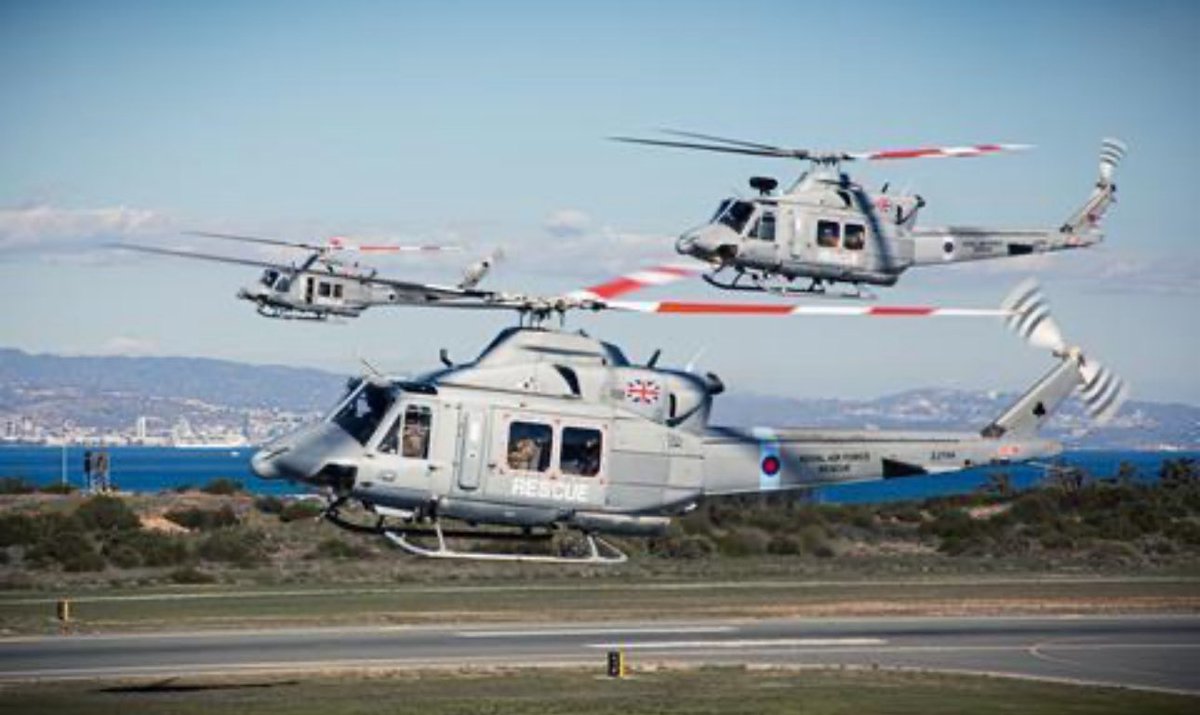Introduction to the UK’s Immigration Protest Crisis
Every now and again I like to focus on different parts of Defence and National Security. Views are my own, I’ve tried to stay apolitical.
1/25 The United Kingdom is grappling with a wave of protests centered on immigration, particularly the Home Office’s use of hotels to house asylum seekers. Demonstrations in Epping, Canary Wharf, and other regions have exposed deep community divisions, fueled by specific incidents and broader policy frustrations.
The recent announcement of “online monitoring units” to track social media has intensified concerns about free speech, further complicating an already volatile situation. This thread tries to examine the protests, their management, the role of agitators, and the risks of escalation if unaddressed.
Every now and again I like to focus on different parts of Defence and National Security. Views are my own, I’ve tried to stay apolitical.
1/25 The United Kingdom is grappling with a wave of protests centered on immigration, particularly the Home Office’s use of hotels to house asylum seekers. Demonstrations in Epping, Canary Wharf, and other regions have exposed deep community divisions, fueled by specific incidents and broader policy frustrations.
The recent announcement of “online monitoring units” to track social media has intensified concerns about free speech, further complicating an already volatile situation. This thread tries to examine the protests, their management, the role of agitators, and the risks of escalation if unaddressed.
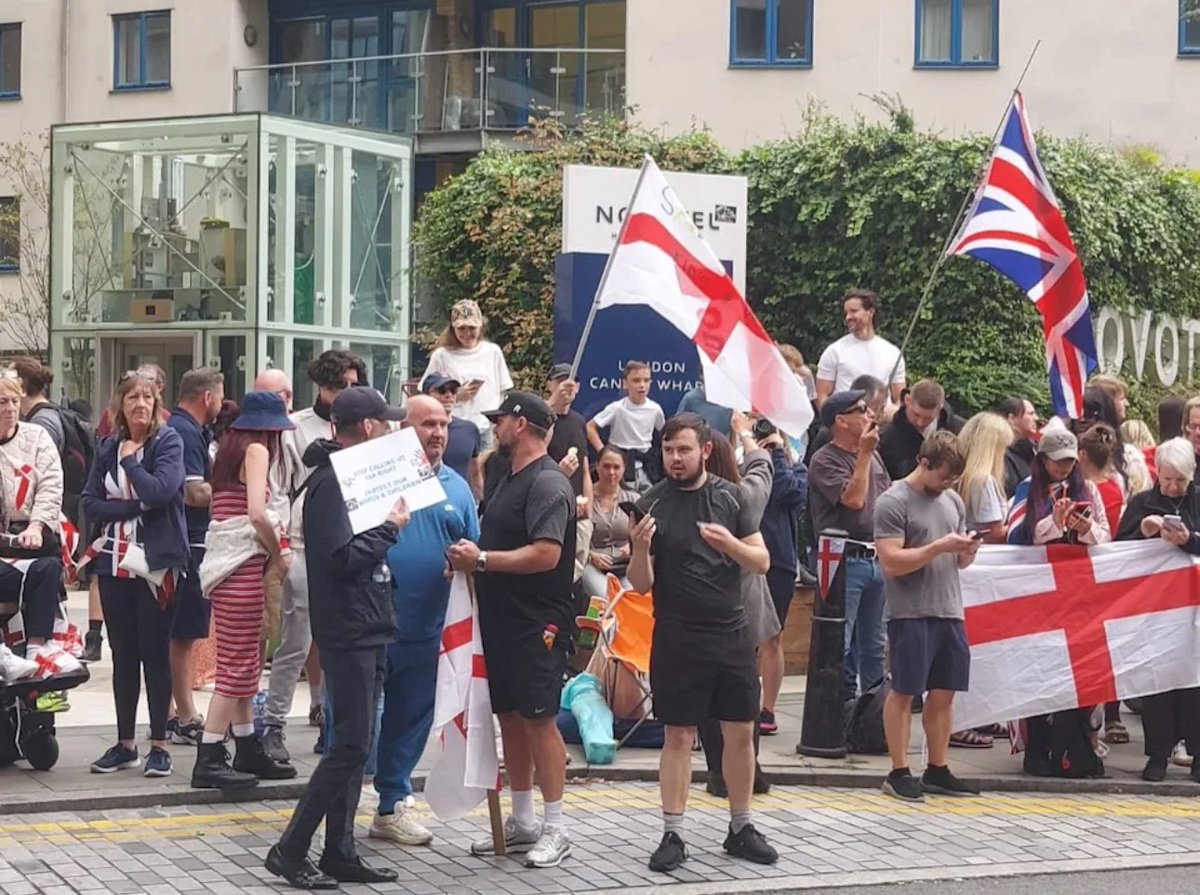
The Epping Protests – A Catalyst for Unrest
2/25 In July 2025, protests erupted outside the Bell Hotel in Epping, Essex, which has housed single male asylum seekers for years. The spark was the arrest of HGK , a 38-year-old Ethiopian asylum seeker, charged with sexual assault after allegedly attempting to kiss a 14-year-old girl. This incident inflamed local tensions, leading to demonstrations that escalated into violence, with significant implications for community cohesion and public safety.
2/25 In July 2025, protests erupted outside the Bell Hotel in Epping, Essex, which has housed single male asylum seekers for years. The spark was the arrest of HGK , a 38-year-old Ethiopian asylum seeker, charged with sexual assault after allegedly attempting to kiss a 14-year-old girl. This incident inflamed local tensions, leading to demonstrations that escalated into violence, with significant implications for community cohesion and public safety.
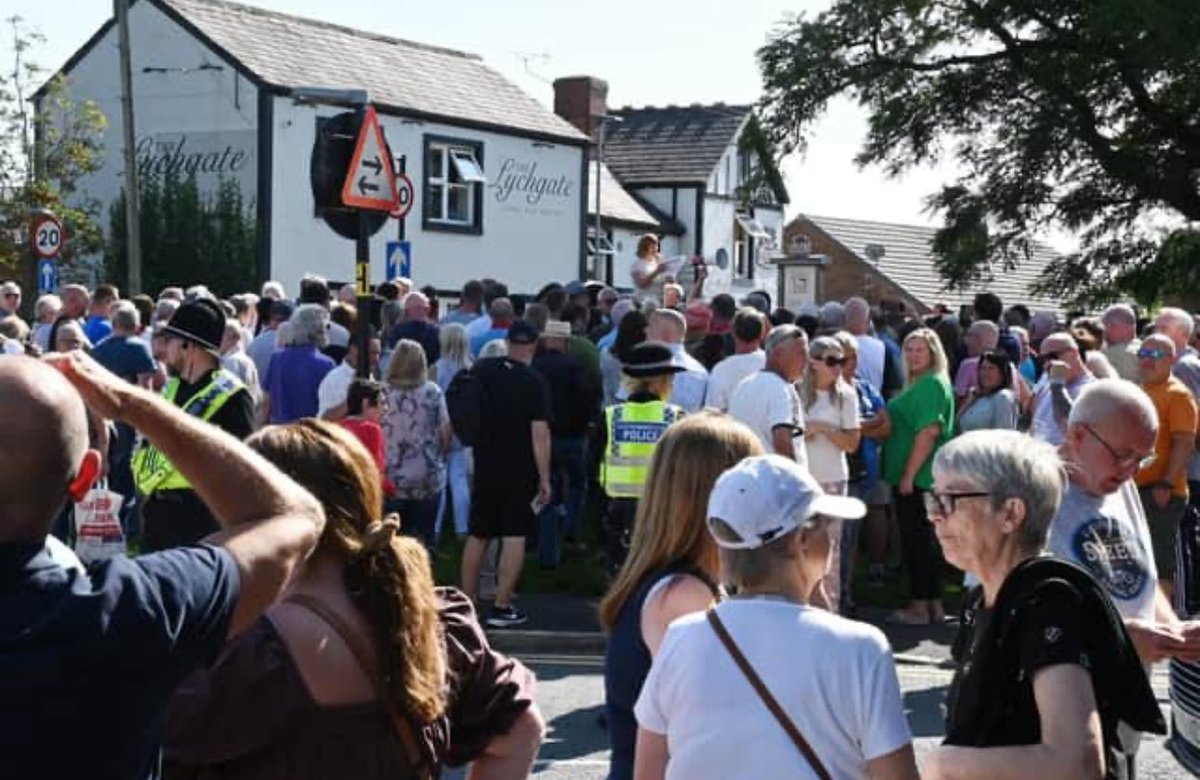
Escalation and Violence in Epping
3/25 The Epping protests saw over 1,000 participants across multiple dates (July 13th, 17th, and 20th). Demonstrators threw bottles, eggs, and smoke flares, damaging police vehicles and injuring eight officers on July 18. Six arrests were made on 20th July for offenses including violent disorder and criminal damage. Two security guards were also attacked at a bus stop, highlighting the growing aggression.
3/25 The Epping protests saw over 1,000 participants across multiple dates (July 13th, 17th, and 20th). Demonstrators threw bottles, eggs, and smoke flares, damaging police vehicles and injuring eight officers on July 18. Six arrests were made on 20th July for offenses including violent disorder and criminal damage. Two security guards were also attacked at a bus stop, highlighting the growing aggression.
Britannia Hotel Protests in Canary Wharf
4/25 On the 2nd of August approximately 100 anti-immigration protesters gathered outside the Britannia International Hotel in Canary Wharf, recently designated for asylum seeker accommodation. False online rumors, spread by figures like Tommy Robinson, claimed migrants were being transferred from Epping, fueling the demonstration. They were met by 2,000 counter-protesters from Stand Up to Racism, leading to nine arrests for public order breaches.
4/25 On the 2nd of August approximately 100 anti-immigration protesters gathered outside the Britannia International Hotel in Canary Wharf, recently designated for asylum seeker accommodation. False online rumors, spread by figures like Tommy Robinson, claimed migrants were being transferred from Epping, fueling the demonstration. They were met by 2,000 counter-protesters from Stand Up to Racism, leading to nine arrests for public order breaches.

Protests Spread Nationwide
5/25 The unrest has spread to Norwich, Diss, Bournemouth, Portsmouth, and beyond. In Norwich, 350–400 anti-immigration protesters rallied outside the Best Western Brook Hotel, chanting “we want our country back,” while 150 counter-protesters responded. In Diss, protests targeted the Park Hotel over plans to house single male asylum seekers, with 150 demonstrators clashing with counter-protesters, reflecting a nationwide pattern of tension.
5/25 The unrest has spread to Norwich, Diss, Bournemouth, Portsmouth, and beyond. In Norwich, 350–400 anti-immigration protesters rallied outside the Best Western Brook Hotel, chanting “we want our country back,” while 150 counter-protesters responded. In Diss, protests targeted the Park Hotel over plans to house single male asylum seekers, with 150 demonstrators clashing with counter-protesters, reflecting a nationwide pattern of tension.

Home Office’s Role in Fueling Tensions
6/25 The Home Office’s decision to use hotels like the Bell and Britannia for asylum seekers, often without local consultation, has been widely criticised. Epping Forest District Council labeled the Bell Hotel “unsuitable,” citing unsustainable strain on communities. The Home Office’s pledge to phase out hotel use by 2029, amid costs of £4 million daily, has done little to quell immediate concerns.
6/25 The Home Office’s decision to use hotels like the Bell and Britannia for asylum seekers, often without local consultation, has been widely criticised. Epping Forest District Council labeled the Bell Hotel “unsuitable,” citing unsustainable strain on communities. The Home Office’s pledge to phase out hotel use by 2029, amid costs of £4 million daily, has done little to quell immediate concerns.
Policing Costs and Resource Strain
7/25 Essex Police have spent over £100,000 managing Epping protests, diverting resources from other community safety priorities. Officers from Merseyside, Surrey, and Sussex have been drafted to support local forces. Chief Superintendent Simon Anslow condemned the “mindless thuggery,” but the persistence of violence suggests current policing strategies are struggling to maintain order.
7/25 Essex Police have spent over £100,000 managing Epping protests, diverting resources from other community safety priorities. Officers from Merseyside, Surrey, and Sussex have been drafted to support local forces. Chief Superintendent Simon Anslow condemned the “mindless thuggery,” but the persistence of violence suggests current policing strategies are struggling to maintain order.
Police Tactics and Public Criticism
8/25 Police have employed dispersal orders and powers to remove face coverings to curb disorder, yet these measures have failed to prevent violence, with projectiles thrown and vehicles damaged. Critics argue that heavy-handed tactics, combined with a lack of proactive engagement, risk escalating tensions rather than resolving them, further eroding public trust in law enforcement.
8/25 Police have employed dispersal orders and powers to remove face coverings to curb disorder, yet these measures have failed to prevent violence, with projectiles thrown and vehicles damaged. Critics argue that heavy-handed tactics, combined with a lack of proactive engagement, risk escalating tensions rather than resolving them, further eroding public trust in law enforcement.
Home Office’s “Failure to Travel” Policy
9/25 The Home Office’s new “failure to travel” guidance, penalising asylum seekers for refusing alternative accommodation, has been criticised as inadequate. Refugee charities argue it merely formalises existing practices without addressing the root causes of community unrest, such as lack of transparency in accommodation decisions, further fueling local resentment.
9/25 The Home Office’s new “failure to travel” guidance, penalising asylum seekers for refusing alternative accommodation, has been criticised as inadequate. Refugee charities argue it merely formalises existing practices without addressing the root causes of community unrest, such as lack of transparency in accommodation decisions, further fueling local resentment.
Lack of Local Engagement
10/25 South Norfolk Council’s surprise at plans to use the Park Hotel in Diss underscores the Home Office’s failure to consult local authorities. This lack of communication has amplified community frustrations, as residents feel excluded from decisions impacting their neighborhoods, contributing to the intensity of protests.
10/25 South Norfolk Council’s surprise at plans to use the Park Hotel in Diss underscores the Home Office’s failure to consult local authorities. This lack of communication has amplified community frustrations, as residents feel excluded from decisions impacting their neighborhoods, contributing to the intensity of protests.
Online Monitoring Units – A Controversial Development
11/25 In July Policing Minister Dame Diana Johnson announced the creation of a National Internet Intelligence Investigations team under the National Police Coordination Centre to monitor social media for signs of anti-migrant unrest. This move aims to track “concerning” posts and advise local forces, but critics warn it risks stifling free speech and escalating tensions.
11/25 In July Policing Minister Dame Diana Johnson announced the creation of a National Internet Intelligence Investigations team under the National Police Coordination Centre to monitor social media for signs of anti-migrant unrest. This move aims to track “concerning” posts and advise local forces, but critics warn it risks stifling free speech and escalating tensions.
Public Backlash to Online Monitoring
12/25 The announcement of online monitoring units has sparked significant backlash. Shadow Home Secretary Chris Philp accused the government of trying to “police opinions” rather than streets, branding it a “disturbing” overreach. Critics argue that monitoring social media posts, such as those criticising asylum hotels, could suppress legitimate debate and deepen public distrust.
12/25 The announcement of online monitoring units has sparked significant backlash. Shadow Home Secretary Chris Philp accused the government of trying to “police opinions” rather than streets, branding it a “disturbing” overreach. Critics argue that monitoring social media posts, such as those criticising asylum hotels, could suppress legitimate debate and deepen public distrust.
Free Speech Concerns Intensify
13/25 The Free Speech Union, led by Lord Young, reported that protest footage, including an arrest in Leeds, was restricted in the UK under the Online Safety Act, citing “local laws.” This censorship, linked to the new monitoring units, has fueled accusations of a “surveillance state,” exacerbating tensions over government transparency.
13/25 The Free Speech Union, led by Lord Young, reported that protest footage, including an arrest in Leeds, was restricted in the UK under the Online Safety Act, citing “local laws.” This censorship, linked to the new monitoring units, has fueled accusations of a “surveillance state,” exacerbating tensions over government transparency.
Political Agitators on the Far-Right
14/25 Far-right groups, including Patriots of Britain and figures like Tommy Robinson, have amplified anti-immigration rhetoric online, spreading misinformation about asylum seekers. Slogans like “Send them back” and claims of “two-tier policing” have fueled protests, risking further violence and community division.
14/25 Far-right groups, including Patriots of Britain and figures like Tommy Robinson, have amplified anti-immigration rhetoric online, spreading misinformation about asylum seekers. Slogans like “Send them back” and claims of “two-tier policing” have fueled protests, risking further violence and community division.

Far-Left Counter-Protests
15/25 Far-left groups, such as Stand Up to Racism, have mobilised large counter-demonstrations, with 2,000 protesters in Canary Wharf. While aiming to counter hate, their presence has led to clashes, with chants like “Nazi scum, off our streets” escalating confrontations and polarising communities further.
15/25 Far-left groups, such as Stand Up to Racism, have mobilised large counter-demonstrations, with 2,000 protesters in Canary Wharf. While aiming to counter hate, their presence has led to clashes, with chants like “Nazi scum, off our streets” escalating confrontations and polarising communities further.

Community Polarisation and Social Cohesion
16/25 The polarised rhetoric—anti-immigration chants versus counter-protest slogans—has deepened community divides. Deputy Prime Minister Angela Rayner acknowledged the “real concerns” about immigration but warned that agitators on both sides are “stirring up trouble,” threatening social cohesion and complicating efforts to restore calm.
16/25 The polarised rhetoric—anti-immigration chants versus counter-protest slogans—has deepened community divides. Deputy Prime Minister Angela Rayner acknowledged the “real concerns” about immigration but warned that agitators on both sides are “stirring up trouble,” threatening social cohesion and complicating efforts to restore calm.
The Online Safety Act’s Role
17/25 The Online Safety Act, effective July 2025, mandates platforms to remove “harmful” content, with fines for non-compliance. The National Security and Online Information Team (NSOIT) has flagged posts about asylum hotels and “two-tier policing,” prompting accusations of censorship and raising concerns about overreach.
17/25 The Online Safety Act, effective July 2025, mandates platforms to remove “harmful” content, with fines for non-compliance. The National Security and Online Information Team (NSOIT) has flagged posts about asylum hotels and “two-tier policing,” prompting accusations of censorship and raising concerns about overreach.
NSOIT’s Monitoring Practices
18/25 NSOIT’s actions, including flagging a rejected Freedom of Information request about asylum hotel locations, have drawn scrutiny. An unnamed civil servant warned of “significant risks” of protests turning violent due to online content, but critics argue this monitoring stifles legitimate criticism and fuels distrust.
18/25 NSOIT’s actions, including flagging a rejected Freedom of Information request about asylum hotel locations, have drawn scrutiny. An unnamed civil servant warned of “significant risks” of protests turning violent due to online content, but critics argue this monitoring stifles legitimate criticism and fuels distrust.
International Criticism of Free Speech Policies
19/25 During their recent meeting in Scotland, US President Donald Trump questioned Keir Starmer on the Online Safety Act’s impact on free speech. Starmer’s unclear response drew US criticism, with the State Department labeling the UK’s approach “Orwellian,” highlighting global concerns.
19/25 During their recent meeting in Scotland, US President Donald Trump questioned Keir Starmer on the Online Safety Act’s impact on free speech. Starmer’s unclear response drew US criticism, with the State Department labeling the UK’s approach “Orwellian,” highlighting global concerns.

Transatlantic Tensions Over Censorship
20/25 The US State Department expressed “great concern” over the suppression of immigration criticism, warning that foreign laws could pressure American tech companies. This transatlantic rift, amplified by the monitoring units, underscores the challenge of balancing safety and free expression.
20/25 The US State Department expressed “great concern” over the suppression of immigration criticism, warning that foreign laws could pressure American tech companies. This transatlantic rift, amplified by the monitoring units, underscores the challenge of balancing safety and free expression.
Local Leaders Sound the Alarm
21/25 Epping’s Conservative MP, Dr. Neil Hudson, described the situation as a “tinderbox,” with church services canceled and businesses closing early due to protests. Local leaders warn that without government action, the unrest could mirror the 2024 Southport riots, which saw widespread violence.
21/25 Epping’s Conservative MP, Dr. Neil Hudson, described the situation as a “tinderbox,” with church services canceled and businesses closing early due to protests. Local leaders warn that without government action, the unrest could mirror the 2024 Southport riots, which saw widespread violence.
Risk of Nationwide Unrest
22/25 The 2024 Southport riots, fueled by misinformation, saw violence spread across England. Epping’s “powder keg” situation, as described by council leader Chris Whitbread, risks similar escalation if grievances over immigration and transparency remain unaddressed, potentially overwhelming state control.
22/25 The 2024 Southport riots, fueled by misinformation, saw violence spread across England. Epping’s “powder keg” situation, as described by council leader Chris Whitbread, risks similar escalation if grievances over immigration and transparency remain unaddressed, potentially overwhelming state control.

Online Monitoring’s Exacerbating Effect
23/25 The introduction of online monitoring units has heightened public distrust, with accusations that the government prioritises surveillance over frontline policing. Critics, including Reform UK’s Zia Yusuf, call it an “Orwellian nightmare,” arguing it inflames tensions by limiting open discourse.
23/25 The introduction of online monitoring units has heightened public distrust, with accusations that the government prioritises surveillance over frontline policing. Critics, including Reform UK’s Zia Yusuf, call it an “Orwellian nightmare,” arguing it inflames tensions by limiting open discourse.
Government’s Broader Challenges
24/25 The Home Office’s reactive measures, police resource strain, and Starmer’s faltering response to international criticism have undermined public confidence. The monitoring units, intended to prevent unrest, may instead alienate communities, driving dissent underground and risking radicalisation.
24/25 The Home Office’s reactive measures, police resource strain, and Starmer’s faltering response to international criticism have undermined public confidence. The monitoring units, intended to prevent unrest, may instead alienate communities, driving dissent underground and risking radicalisation.

Conclusion – Urgent Need for Balanced Action
25/25 The UK’s immigration protests, from Epping to Canary Wharf, reflect deep tensions exacerbated by poor communication, inadequate policing strategies, and the controversial online monitoring units. Without transparent engagement, community dialogue, and a balanced approach to free speech, the situation risks escalating into widespread unrest, threatening public safety and social cohesion beyond the state’s ability to manage.
Is the current government up to the task or are they part of the problem.
Opinions and thoughts welcome.
Facts, as always, can be challenged and corrected.
25/25 The UK’s immigration protests, from Epping to Canary Wharf, reflect deep tensions exacerbated by poor communication, inadequate policing strategies, and the controversial online monitoring units. Without transparent engagement, community dialogue, and a balanced approach to free speech, the situation risks escalating into widespread unrest, threatening public safety and social cohesion beyond the state’s ability to manage.
Is the current government up to the task or are they part of the problem.
Opinions and thoughts welcome.
Facts, as always, can be challenged and corrected.

• • •
Missing some Tweet in this thread? You can try to
force a refresh


